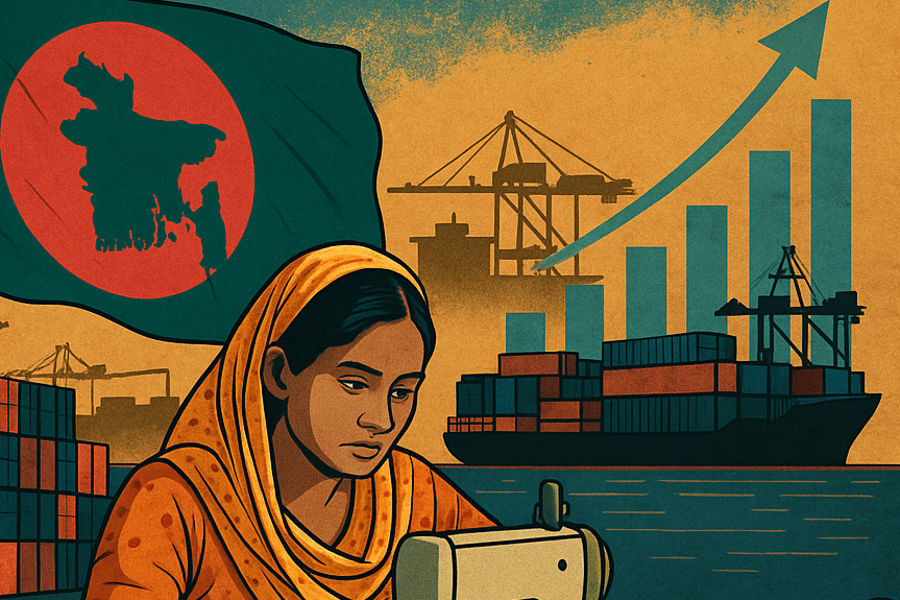
Published :
Updated :

Any major industry develops concurrently allowing the opportunity of growth of allied or backward linkage industries. The readymade garment (RMG) industry has also been behind the emergence of such source industries. Textile mills in this country had seen many ups and downs and before RMG took off, their fortunes plummeted. In fact, local textile mills made a turnaround when they started supplying raw materials like knit fabric and woven fabric to the country's burgeoning RMG industry. Now, the happy days seem to be over with local textiles mills failing to meet the RMG demand due to a number of critical factors. Production disruption is certainly the number one issue. But the mills are not doing it deliberately; it is the direct consequence of crisis of natural gas. They are helplessly looking at the declining orders for their materials and growing import from other countries.
In such an uncertain and to some extent uneconomic environment, import of knit fabric has surged by 32.18 per cent to 0.51 million tonnes in the last fiscal year. Similarly, import of woven fabric also rose by 16.12 per cent to 0.62 million tonnes in the previous fiscal of 2023-24. Yarn import also saw a rise by 13.35 per cent. It is also interesting that the country also imported 8.35 million bales of cotton last fiscal compared with 7.75 million bales in the fiscal 2023-24. This is an indication that the mills had their preparation to go about the business as usual but circumstances beyond their control have suddenly disrupted the situation. The local textile mills have also been facing another adversity in the form of a slash in cash incentives. According to the president of the Bangladesh Knitwear Manufacturers and Exporters Association (BKMEA), cash-incentive support is virtually non-existent and exporters feel discouraged to claim the facility involving a lengthy process, not to mention the 'harassment'.
Business does not tolerate administrative impudence in this regime of global trade. There are alternative sources available. That exactly has happened and the buyers, moreover, have insisted on import of fabrics from China because of reliability in timely supply. In this context, India's aggressive 'dumping rate' on its fabrics can be an example of how a government promotes the business of that country. It is quite clear that at a crunch time, some desperate measures were needed to promote businesses. Here the government is taking the reverse course.
Now both China and India are set to take away orders for fabrics ---both woven and knit---from Bangladesh textile mills. Here the foreign buyers' opinions are also proving decisive. Clearly, the prospect for the local textile mills does not look particularly bright. At a time Trump's reciprocal tariff has thrown the world's business in turmoil, there was a need to be on guard against any lapses at the domestic level. Now the textile mills may have to pay a heavier price than they would need if only a steady fuel supply could be ensured. It is the time when the challenge before industries is to survive no matter if the profit is low. If business suffers to the point where garment factories move to foreign countries for their source materials, it also bodes ill for the country's main export good.


 For all latest news, follow The Financial Express Google News channel.
For all latest news, follow The Financial Express Google News channel.